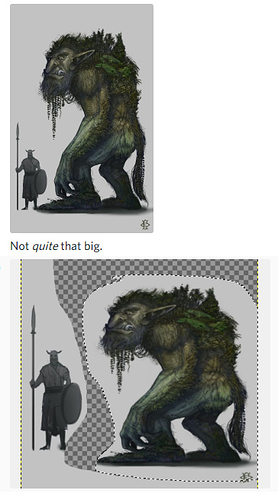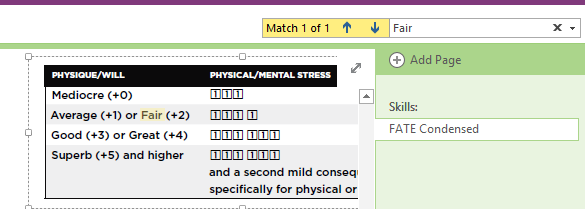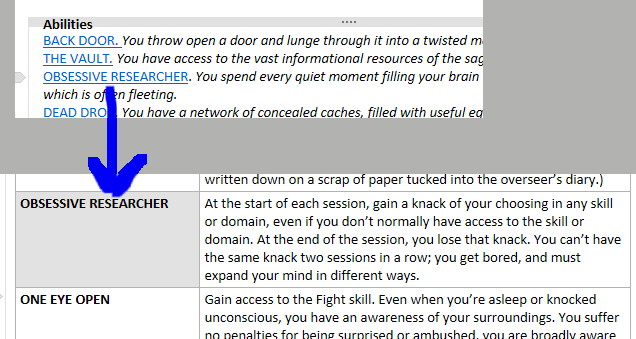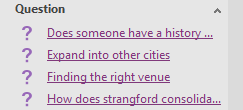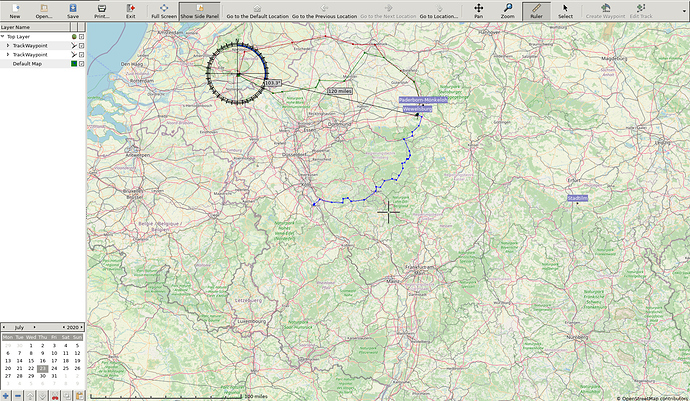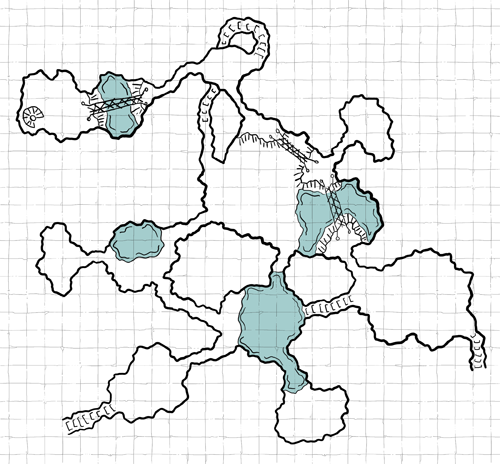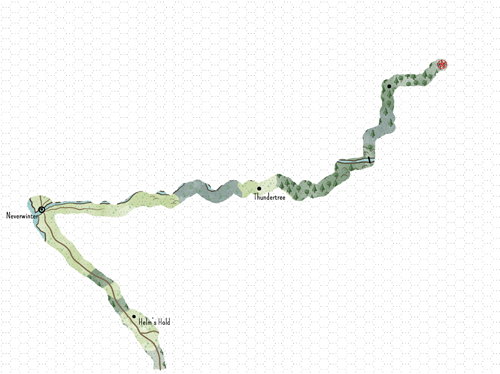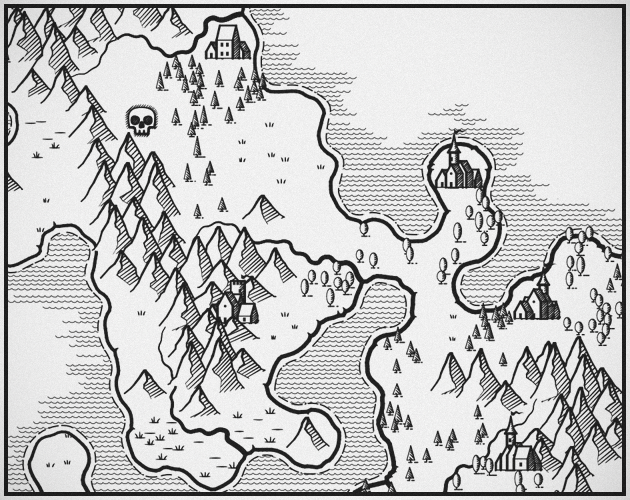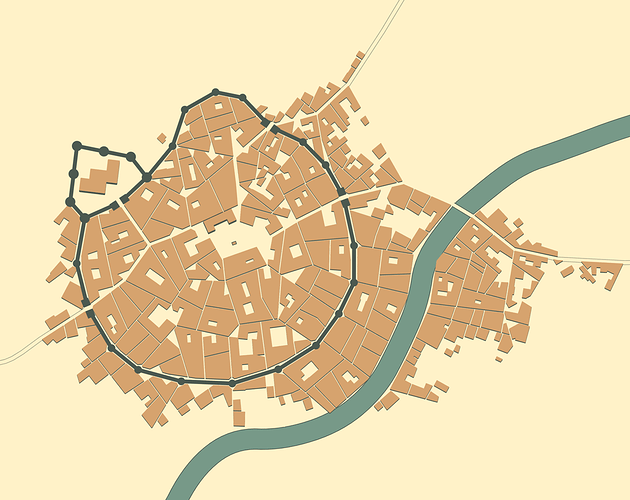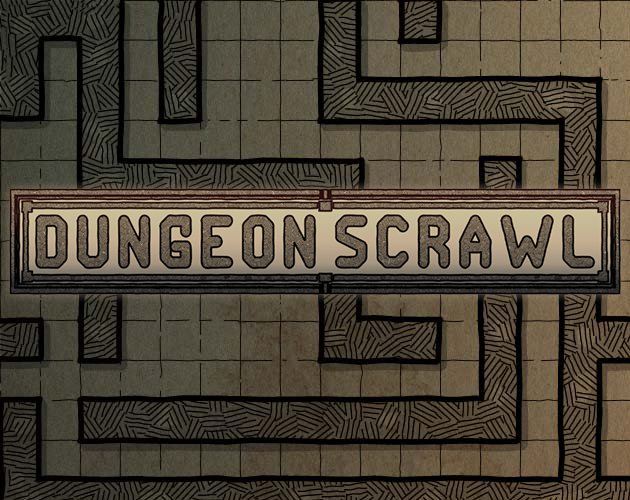Communication
Headphones are really important in most environments. If you can get your microphone and speakers working together without feedback for the other players? Great, you can skip the headphones. Otherwise, they’re more or less essential. As for software, so far I’ve had a lot of success with:
-
Discord – My top pick. Fairly painless to onboard newcomers, good audio and video. Inconsistent connection performance for some users. Doesn’t affect me much, but affects quite a few people I’ve played with. Video quality is good and seems pretty similar in consistency to audio quality. Seamless integration of a full chat client with the video/audio is really important here, and the channel system when using a full server setup is lovely. It’s great to be able to shove images in particular right into the chat, and being able to organize things a bit is quite helpful in busier games.
-
Google Hangouts – This is the software I’ve had the least connection consistency with lately. It used to be my go-to. For audio it still mostly works great, but I’ve really struggled to get consistency out of it over video for about the past two and a half years. I have these issues on multiple setups so while I’ve no doubt they’re idiosyncratic, they aren’t hardware specific. The integration between chat and video here is less appealing, with two separate chat features each with their own disadvantages.
-
Skype – My second pick. I’ve had a lot more success hosting multi-member video chat over Skype than Hangouts and the chat integration is a lot smoother. When I have had issues, it’s usually due to version syncing and while this can be weirdly sneaky for such an obvious issue, a quick update or reboot of the software seems to solve most issues.
-
Google Meet – A new piece of software separate from the G-mail/Hangouts ecosystem. It has very limited chat functionality last I used it a few weeks back (no image or video embeds), but the video seems much more stable than Hangouts.
That’s everything I use for audio, video, and chat. I have a dedicated webcam I really like, and before that I always had a nice microphone handy as I’m an amateur recording artist–I’m not the right person to ask for specific suggestions on gear, than, but I can definitely say microphone quality makes a big difference. When I play on my laptop without a dedicate mic, my players tend to notice a big reduction in quality or at least in background noise from the fans and the keyboard. I highly recommend a headset, standalone microphone, or external webcam if you use a laptop–all of those decrease noise from shifting, typing, and internal fans.
Other Stuff
For software, I have a few other things I like to use depending on who I play with and what game I’m playing. First, the big one.
-
Roll20 – This is the best virtual tabletop option. There are others with slightly better features for this or that if you play D&D, but very little out there supports arbitrary play quite so well. There are two reasons for this. The first is that it’s free. You can both play and run games for free without crucial features being locked away. Several options I might consider superior tend to more significantly hamstring free users in some way. The second reason is the map system. There are other virtual tabletops that meet or exceed Roll20’s standard for a heavily prepared miniatures-based D&D adventure, but nothing that I’ve found as useful for the wild shamble of different systems I use.
More on Roll20
Roll20’s map supports multiple layers, the uploading of arbitrary images (and a generous amount of space for them even as a free user), and the drawing of arbitrary shapes. This last point is something that’s surprisingly hard to find–other programs I’ve tried have much more limited line drawing tools. None of them also provide the same level of flexibility in automated dice macros, the same selection of custom character sheets made by the community, or the same flexibility in the mapping system for general use outside of miniatures context. And while others might have it beat here and there for D&D miniatures, Roll20 can handle tactical games just fine, too.
Roll20 chat has some limitations–again a lack of image embeds–so I really only use Roll20 for maps, drawings, and dice rolling.
General Coordination
I make heavy use of the Google Docs suite. I’ve used the calendar and forms to arrange meetups, I’ve used Drive, Docs and Sheets to collect useful resources, character sheets, and even used Sheets, Docs and/or Slides to replace Roll20 as our virtual tabletop. This has the advantage of being accessible to far more users as it doesn’t even require everyone to make an account. Slides works pretty well as a replacement of Roll20’s map (you lose the layering system that helps avoid accidental map-jostling, but keep the advanced arbitrary drawing and have much better text capability). Sheets can act as a dice roller and is great for character Sheets. For really simple games, the whole game can be played entirely in just one of the three tools.
Drawing
I’m not an artist. I still really like drawing for games, even if it’s just stick figures. It helps me and it often helps my players. I have a graphics tablet for this which I really enjoy using, but a mouse will do just fine for most things. Because I tend to do things on the fly, on-the-fly drawing is a lot more important to me than having pretty looking maps. When I do need something a little more robust, I’ve started looking to:
Maps
Inkarnate, Wonderdraft, and Dungeondraft. I’ve heard good things about Dungeon Fog, as well. All of these are best for varying flavors of fantasy maps with the former two focusing on large area maps and the latter two more focused on miniature-scale maps.
Inkarnate and Dungeon Fog are subscription-based, with subscribers gaining access to more simultaneous saved maps and a wider selection of map object–Inkarnate is much more generous with its assets for free users like myself.
Wonderdraft and Dungeondraft are paid software rather than subscription based–I prefer this, but it does mean there’s no free option. Dungeondraft is still fairly early in development and is missing a number of features like custom asset importing and assets for things other than dungeons, forests and caves–but it’s a pretty flexible tool in terms of quickly generating or drawing floors, walls, and dynamic lighting objects and it integrates very smoothly with Roll20.
Wonderdraft is quite lovely. If you try Inkarnate and you like it, I strongly suggest checking out Wonderdraft. Between custom assets made by the community and the flexibility of the tool itself, its easy to produce really impressive and nice looking maps at various scales–I wouldn’t use it for miniature-scale maps, though. It’s not as robust as something a skilled user could whip out of Photoshop or Gimp, but the things I make with it are an awful lot prettier than the things I make in GIMP and take a lot less time to make because a lot of the hardest work is already done in making the stamps and automating the tooling.
Editing
Speaking of, I find a good editing program really useful. I use GIMP because it’s free and I’ve been slowly learning more advanced tricks with it and I have trouble going back to MS Paint or Windows Photo Editor now. A lot of the stuff I use it for could be done in much simpler tools, though. Here’s me expressing a character’s scale:
Oh gosh that image embedded large
I really like having the flexibility to give that kind of visual feedback–hence why I made a point of which chat programs can embed images up there under communications. I want to be able to quickly paste images from the web, quickly draw things, and quickly edit images before posting them. So I can give my players the hats they’ve earned.
Whoops, big again
